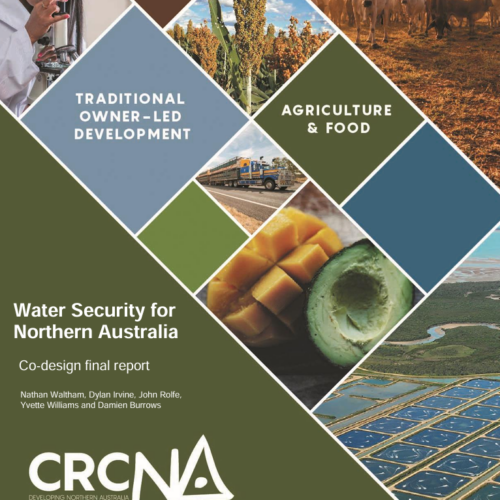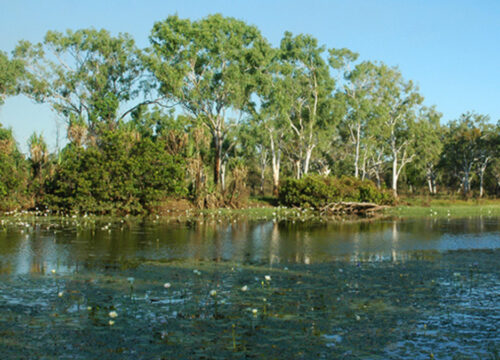
- Author Waltham, N., Irvine, D., Rolfe, J., Williams, Y., Burrows, D
- Publish date 11 May 2023
- Type Report
- ISBN 978-1-922437-46-4
- Documents
- Water Security program
- Water
Summary
The CRCNA partnered with the Northern Australian Universities Alliance to fund research into key issues for sustainable utilisation of water resources in Northern Australia.
This program has identified four key focal nodes where pressure for increased water utilisation is high – Gilbert (QLD), Daly-Katherine (NT), Ord (WA), and lower Fitzroy (QLD) – to be the focal nodes for this research program. To determine the most appropriate research questions for each focal node, we undertook a co-design phase with relevant regional stakeholders in each focal node. This co-design phase and its outcomes are described here. The result includes the generation of 15 research projects that are now proposed for funding under the Water Security for Northern Australia program.
A second implementation phase of this program is now underway, as the Water Security for Northern Australia – Implementation Phase
Projects
Water Security for Northern Australia program: Co-design phase
This project will organise the collective expertise of 3 north Australian-based universities (James Cook University, Charles Darwin University and Central Queensland University) who have recently formed the Northern Australia Universities Alliance (NAUA). The NAUA partners will collaborate on undertaking a program of stakeholder engagement and research needs analysis in 4 focal catchments (Nodes) in order to design, develop and cost a cohesive and impactful 3.5 year research program that delivers on the core priorities of those stakeholders in those 4 focal catchments. These have been identified as: Wider Tindal Basin, NT Douglas Daly and Roper River, NT Lower Fitzroy Basin/ Gilbert River, catchment QLD Kimberley-Ord Irrigation Scheme, WA The research will involve the project team gaining a better understanding of the constraints to agricultural and water resource development, engaging with key stakeholders and government agencies to better understand the issues they believe are priorities for further research and then to develop a suitable research plan to address the issues identified during this process. The research approach is largely based on desktop analysis, literature review, stakeholder engagement and meetings. No new primary information is expected to be generated in the first 6 month phase represented by this proposal. However, the activities in this proposal will generate a coherent research program that answers research priorities identified during this development phase.


